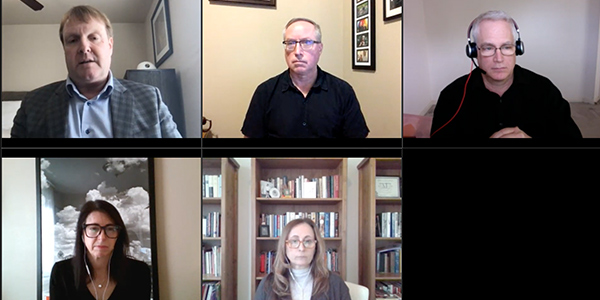CAISO’s CEO and four other top officials discussed the ISO’s handling of California’s mid-August blackouts and actions to head off future shortages in a webinar Wednesday hosted by the Clean Coalition, a nonprofit that advocates for clean energy and grid modernization.
The webinar was intended partly as a response to a similar Clean Coalition event last month in which Loretta Lynch, former president of the California Public Utilities Commission, questioned CAISO’s actions in August and called on the state’s attorney general to investigate ISO market practices. (See Former CPUC President Calls for CAISO Probe.)
“I think it’s time for the California attorney general to investigate what happened at the ISO and, more than that, the ISO’s market practices that can’t keep the lights on,” Lynch said at the time.
CEO Elliot Mainzer, who assumed his role Sept. 30, denied any insinuation of a coverup Wednesday. He said the ISO’s top priorities include transparency, market integrity and resource adequacy.
“This is clearly a pivotal moment for the state, and I think we all recognize that it’s essential that we develop a clear-eyed understanding of the root causes of the summer events,” Mainzer said. “This is exactly what we are working on at the moment.”
CAISO, the CPUC and the California Energy Commission (CEC) plan to release a final report by Dec. 31 on the root causes of the August blackouts and the planning, procurement and operational changes needed to prevent further outages, Mainzer said. The report will build on a preliminary analysis sent to Gov. Gavin Newsom in October. (See CAISO Says Constrained Tx Contributed to Blackouts.)
Among Lynch’s questions in November was why CAISO had allowed large exports during an extreme heat wave when it knew the system would be strained. She also questioned why some generators were not operating and asked whether convergence bidding, a financial hedge on supply and demand, played a role.
In additional written questions read to Mainzer on Wednesday, Lynch asked about the ISO’s views on transparency and why it had sought permission to withhold information from the CPUC in a recent proceeding to secure emergency capacity for next summer.
Mainzer insisted there had been no effort by CAISO staff to obfuscate. “From day one, personally I have been very pleased with my staff’s openness and their commitment to rigorously analyze and learn from the events of August,” he said.
A report by the ISO’s Department of Market Monitoring found no evidence of market manipulation or strategic outages, Mainzer noted. (See CAISO Wasn’t Gamed in Blackouts, Watchdog Finds.)
“That said, we need to stay ever vigilant on that front,” he said. “The integrity of our markets is of paramount importance to me.”
Responding to Lynch’s question about the CPUC proceeding, Mainzer said his understanding was the ISO had sought to avoid releasing reams of data to hasten the PUC’s emergency procurement process. But he said of Lynch’s query, “I’ll take that as a fair question. Certainly, my commitment to transparency shouldn’t expire in the first inning.”
‘Vulnerabilities’ for Several Years
COO Mark Rothleder, who is leading the root-cause analysis, reiterated that several major factors caused the Aug. 14-15 blackouts and energy emergencies over Labor Day weekend that nearly led to blackouts. The main causes included “climate change-induced extreme [heat] conditions … across the Western United States” that exceeded planning targets, and inadequate supply during the net peak — the early evening hours, when solar dropped offline but demand remained high.
The ISO is examining its market practices that may have contributed to the strained conditions including rules on exports and scheduling, he said.
Rothleder warned that “vulnerabilities and the need for additional capacity will exist for several years,” as aging gas plants and the state’s last working nuclear plant, Diablo Canyon, cease operations. Shortfalls next summer could range from 450 to 3,300 MW, he said.
Most of the new resources coming online by summer 2021 will be storage, and the ISO needs to ensure that operators maximize their ability to contribute during the hour or two after solar generation wanes.
CAISO is asking the CPUC to increase its planning reserve margin from 15% to 20% for peak and net peak times and to procure additional resources in anticipation of summer shortfalls, he said.


